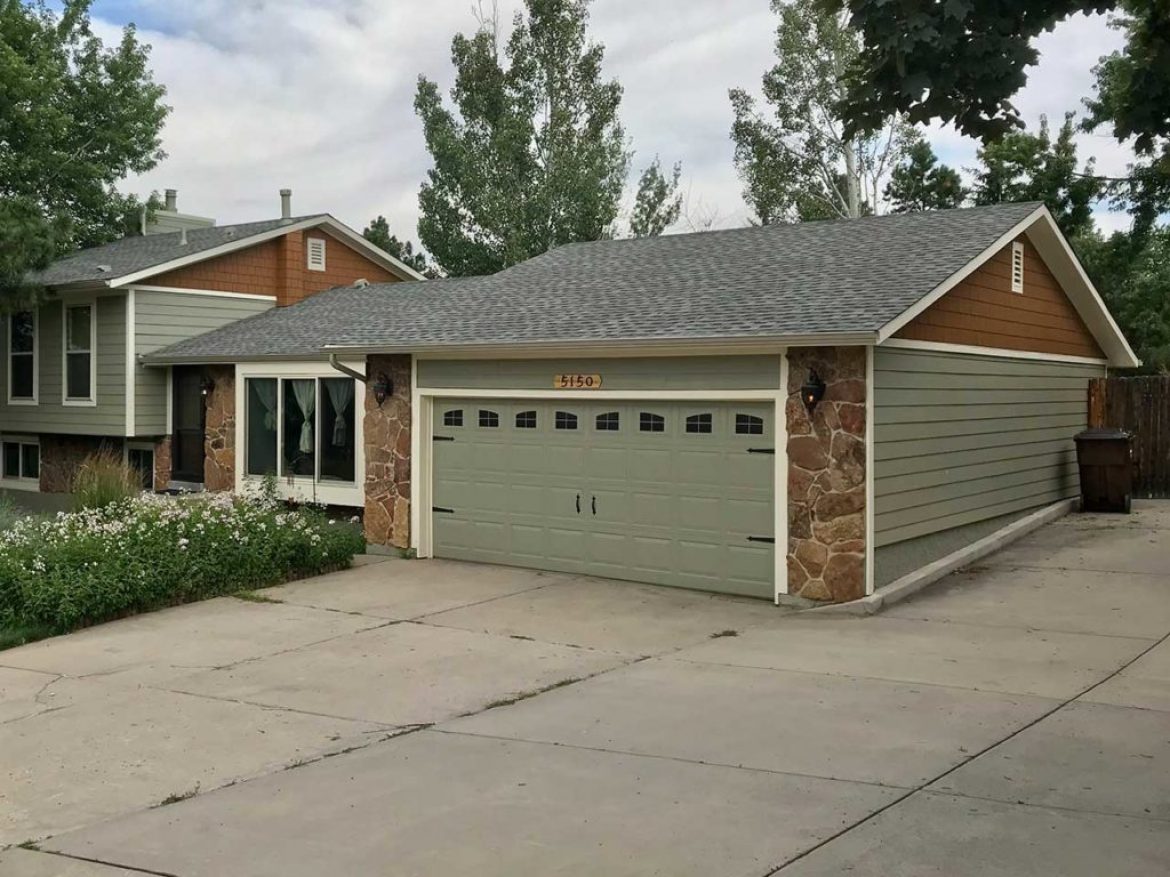Eco-Friendly and Sustainable: The Advantages of James Hardie Siding for Environmentally Conscious Homeowners


In the heart of Colorado Springs, where the natural beauty of the landscape calls for a harmonious balance between development and environmental stewardship, homeowners are increasingly seeking sustainable solutions for their homes. Siding Pro of Colorado Springs recognizes this growing trend and is proud to spotlight James Hardie Siding, a choice that aligns with the eco-friendly and sustainable values of our community.
The Green Footprint of James Hardie Siding
James Hardie Siding is not only known for its durability (fiber cement siding) and aesthetic versatility but also for its commitment to environmental sustainability. Let’s delve into the aspects that make James Hardie Siding a green choice for homeowners in Colorado Springs.
Sustainable Manufacturing
Low Emission Production: James Hardie’s manufacturing processes are designed to minimize carbon emissions, contributing to cleaner air and a healthier environment. Their commitment to reducing their carbon footprint resonates with the eco-conscious community of Colorado Springs.
Responsible Raw Materials: The primary component of James Hardie Siding is fiber cement, a mixture that includes wood fiber from sustainable sources. This responsible sourcing ensures that the product contributes to the conservation of our forests and natural resources.
Energy Efficiency and Insulation
Superior Insulation: James Hardie Siding provides excellent insulation, helping to reduce energy consumption in homes. This enhanced energy efficiency is particularly beneficial in Colorado Springs, where temperatures can vary dramatically, from warm summers to chilly winters.
Reduced Heating and Cooling Costs: By improving thermal regulation inside the home, James Hardie Siding helps lower the need for heating in the winter and cooling in the summer, leading to significant energy savings and a smaller carbon footprint.
Durability and Longevity
Long-Lasting Performance: One of the most eco-friendly features of James Hardie Siding is its longevity. Durable materials mean less frequent replacements, reducing the demand on resources and decreasing waste over time.
Resistance to Pests and Elements: The resilience of James Hardie Siding against pests like termites and conditions like rot and moisture not only ensures a longer lifespan but also eliminates the need for chemical treatments that can harm the environment.
Advantages of Fiber Cement Siding
Fiber cement siding has become a popular choice for homeowners and builders looking for a durable and low-maintenance exterior cladding option. There are several advantages to using fiber cement siding, making it a compelling choice for any construction project.
One of the main advantages of fiber cement siding is its durability. This type of siding is designed to withstand harsh weather conditions, including extreme heat, cold, and moisture. It is also resistant to rot, warp, and pests, making it a long-lasting option for any climate.
In addition to its durability, fiber cement siding is also low maintenance. Unlike wood siding, which requires regular painting and sealing to prevent rot and decay, fiber cement siding is virtually maintenance-free. It does not need to be repainted frequently and can easily withstand the elements without deteriorating.
Another advantage of fiber cement siding is its versatility. It can be manufactured to mimic the look of natural wood, stucco, or stone, offering homeowners a wide range of aesthetic options. This allows for a custom look that can complement any architectural style.
Furthermore, fiber cement siding is also fire-resistant, making it a safer choice for homes and buildings in wildfire-prone areas. This added level of protection can provide peace of mind for homeowners and builders in areas at risk of fire damage.
Overall, fiber cement siding offers a number of benefits, including durability, low maintenance, versatility, and fire resistance. These advantages make it a popular choice for homeowners and builders looking for a reliable and attractive exterior cladding option.
Which material is best?
When it comes to deciding on the right siding materials for your home, there are a plethora of options to choose from. From vinyl and wood to fiber cement and metal, each type of siding material comes with its own set of benefits and drawbacks. In this article, we’ll take a closer look at the benefits of fiber cement siding, and how it compares to other popular siding materials.
Fiber cement siding has gained popularity in recent years due to its durability, low maintenance, and visual appeal. Made from a combination of cement, sand, and cellulose fibers, this type of siding offers a unique combination of strength and versatility. Unlike wood, fiber cement is resistant to rot, warping, and insect damage, making it a low-maintenance option for homeowners.
In terms of longevity, fiber cement siding is known to last for decades, with minimal upkeep required. This is in stark contrast to vinyl siding, which can crack, fade, and become brittle over time. While wood siding may offer a natural and timeless look, it requires regular staining, painting, and sealing to maintain its appearance and protect it from the elements.
Another benefit of fiber cement siding is its resistance to fire, moisture, and pests. This makes it a particularly attractive option for homeowners living in areas prone to extreme weather conditions or where termites and other pests are a concern. In comparison, metal siding may be prone to rusting and denting, while vinyl siding is flammable and susceptible to damage from hail and high winds.
Additionally, fiber cement siding comes in a wide range of styles, textures, and colors, allowing homeowners to achieve the look they desire for their home. Whether you prefer the appearance of cedar shakes, traditional lap siding, or a modern smooth finish, fiber cement can mimic the look of various materials while providing the benefits of durability and longevity.
Overall, while each siding material has its own set of advantages, fiber cement stands out as a durable, low-maintenance, and visually appealing option for homeowners. Its resistance to pests, fire, and moisture, coupled with its long lifespan, make it a solid choice for those looking to invest in the long-term protection and aesthetic appeal of their home.
Durable and long-lasting
Fiber cement siding has gained popularity in recent years due to its durability and long lifespan. Made from a combination of cement, sand, and cellulose fibers, this type of siding is known for its ability to withstand harsh weather conditions and resist damage from pests and moisture. This makes it an ideal choice for homeowners looking for a low-maintenance and long-lasting siding option.
The durability of fiber cement siding can be attributed to its composition, which makes it resistant to rot, fire, and impact. Unlike wood siding, fiber cement does not warp, crack, or decay, making it a reliable choice for homeowners looking for a siding material that will stand the test of time.
In addition to its resistance to damage, fiber cement siding is also known for its long lifespan. When properly installed and maintained, fiber cement siding can last for decades, making it a worthwhile investment for homeowners. Its ability to retain its original appearance and structural integrity over time makes it a cost-effective choice in the long run.
With its ability to withstand the elements and maintain its quality over time, fiber cement siding is a popular choice for homeowners looking for a durable and long-lasting siding option. Its low maintenance requirements and resistance to damage make it a reliable and attractive option for those looking to improve the exterior of their homes. Whether it’s enduring harsh weather conditions or maintaining its appearance over time, fiber cement siding is a top choice for homeowners looking for a siding option that will last.
Low maintenance requirements compared to wood siding
When it comes to choosing the right siding for your home, low maintenance requirements are often a top priority for many homeowners. Compared to wood siding, which requires regular maintenance and upkeep, there are several alternative siding options that offer low maintenance benefits.
One of the main reasons why many homeowners opt for low maintenance siding options is to save time and money in the long run. Wood siding, while beautiful and timeless, requires regular maintenance such as painting, sealing, and repairs to keep it looking its best. This can be not only time-consuming but also costly, as the need for professional maintenance or replacement of damaged wood can add up over time.
On the other hand, alternative siding materials such as vinyl, fiber cement, and metal require minimal maintenance to keep them looking great year after year. Vinyl siding, for example, is incredibly low maintenance and only requires occasional cleaning with a hose and mild soap to remove dirt and debris. Fiber cement siding is also a popular low maintenance option, known for its durability and resistance to rot, pests, and extreme weather conditions. Metal siding, such as aluminum or steel, is another low maintenance option that is resistant to moisture and pests and can easily be cleaned with a pressure washer.
In addition to reducing the time and effort needed to maintain the exterior of your home, low maintenance siding options also offer long-term cost savings. With minimal maintenance and a longer lifespan, homeowners can save on the ongoing costs of painting, repairs, and replacements that are often associated with wood siding.
Overall, when considering the different siding options for your home, it’s important to factor in the long-term maintenance requirements and costs. Low-maintenance siding materials such as vinyl, fiber cement, and metal offer a practical and cost-effective solution for homeowners looking to minimize the time and effort spent on exterior maintenance compared to the higher maintenance demands of wood siding.
Curb Appeal and Aesthetic Appeal
Curb appeal and aesthetic appeal are two important factors when it comes to the overall look and feel of a property. Curb appeal refers to the attractiveness of a property as seen from the street, while aesthetic appeal encompasses the overall visual appeal of the property’s interior and exterior spaces. Both play a crucial role in creating a positive first impression and can significantly impact the value of a property.
Curb appeal is essential for creating an inviting and welcoming atmosphere for guests and potential buyers. It includes elements such as landscaping, exterior paint, architectural details, and the condition of the property’s exterior. A well-maintained and attractive exterior can make a property stand out in a neighborhood and make a positive impression on potential buyers.
Aesthetic appeal, on the other hand, focuses on the overall design and visual appeal of a property’s interior and exterior spaces. This includes factors such as the layout, decor, color scheme, and overall ambiance. Aesthetic appeal is important for creating a comfortable and visually appealing living or working environment. It can also influence the mood and atmosphere of the space, making it more inviting and enjoyable for those who occupy it.
Both curb appeal and aesthetic appeal are important for enhancing the overall value of a property. When a property has strong curb appeal, it can attract more potential buyers and command a higher price on the market. Similarly, a property with strong aesthetic appeal can be more desirable to potential buyers and tenants, making it easier to sell or rent at a higher price.
In conclusion, both curb appeal and aesthetic appeal are essential for creating a visually appealing and inviting property. They play a crucial role in making a positive first impression and can significantly impact the value of a property. By focusing on these aspects, property owners can create a welcoming and attractive space that is more desirable to potential buyers and tenants.
The importance of curb appeal in enhancing the overall look of a home
Curb appeal is a crucial aspect of a home’s appearance and can greatly influence its overall look and feel. It is the first impression that a potential buyer or visitor will have of a property, and it can significantly impact the perceived value and desirability of a home. Therefore, it is important for homeowners to prioritize and invest in enhancing their home’s curb appeal in order to make a positive impact on their property’s appearance.
One of the main reasons why curb appeal is so important is that it sets the tone for the rest of the home. The exterior of a property is the first thing that people see when they approach a house, and it can either make a positive or negative impression. A well-maintained and visually appealing exterior can attract people and pique their interest in the property, whereas a neglected or unattractive exterior can turn people away before they even step foot inside the home.
Curb appeal can also enhance the perceived value of a home. A property that looks well-maintained and visually appealing from the outside is likely to be perceived as more valuable than a property with a lackluster exterior. This can significantly affect the asking price and the potential return on investment for homeowners who are looking to sell their property.
In addition to increasing the perceived value of a home, curb appeal can also improve the overall neighborhood and community. When homeowners take the time and effort to enhance the appearance of their property, it can inspire others in the neighborhood to do the same. This can lead to a domino effect of improved curb appeal throughout the neighborhood, ultimately enhancing the overall aesthetic and desirability of the community.
There are many ways that homeowners can enhance their home’s curb appeal, such as maintaining a well-manicured lawn, adding landscaping and hardscaping features, updating the exterior paint, and investing in high-quality doors and windows. By prioritizing curb appeal and making strategic investments in the exterior of their home, homeowners can greatly enhance the overall look and feel of their property, ultimately making a positive impact on its perceived value and desirability.
How James Hardie’s fiber cement siding enhances the aesthetic appeal of a home
James Hardie’s fiber cement siding is known for its durability and performance, but it also significantly enhances the aesthetic appeal of a home. With a range of styles and textures available, James Hardie siding can completely transform the look of a house, adding curb appeal and increasing the overall value of the property.
One of the key benefits of using James Hardie siding is the ability to mimic the look of natural materials such as wood, stone, and cedar shingles. Whether you prefer the classic charm of traditional lap siding or the rustic elegance of shake or shingle siding, James Hardie has a product to suit your preferences. This allows homeowners to achieve the desired aesthetic without the maintenance and upkeep required for natural materials.
In addition to its ability to replicate the appearance of natural materials, James Hardie siding is also available in a wide range of colors, from timeless neutrals to bold, modern hues. This versatility allows homeowners to create a custom look that complements the architectural style of their home and reflects their personal taste.
Furthermore, the consistent, uniform finish of James Hardie siding creates a clean and polished appearance that contributes to a well-groomed and attractive exterior. The crisp lines and smooth surfaces of the siding add a sense of refinement and sophistication to the overall design of the home.
Beyond its visual appeal, James Hardie’s fiber cement siding is also designed to withstand the elements, providing long-lasting protection and strength. This means that not only will your home look beautiful with James Hardie siding, but it will also be well-protected from harsh weather conditions and wear and tear.
In conclusion, choosing James Hardie’s fiber cement siding for your home not only ensures superior performance and durability but also elevates its aesthetic appeal. With its ability to replicate the look of natural materials, versatile color options, and a polished finish, James Hardie siding can truly transform the exterior of a home, creating a stunning and timeless look that will be admired for years to come.
Colorado Springs’ Environmental Values
In a city surrounded by natural wonders, from the majestic Pikes Peak to the serene Garden of the Gods, it’s no surprise that the residents of Colorado Springs prioritize eco-friendly living. Choosing James Hardie Siding reflects a commitment to preserving our environment for future generations while enjoying a beautiful, durable, and efficient home exterior.
As we strive for a more sustainable future, it’s essential to make choices that reflect our environmental values. James Hardie Siding offers a blend of durability, beauty, and eco-friendly features that make it an ideal choice for Colorado Springs homeowners. By selecting James Hardie Siding, you’re not only enhancing your home but also contributing to a greener, more sustainable community.
Ready to make a sustainable choice for your home’s exterior? Contact Siding Pro of Colorado Springs to learn more about the eco-friendly benefits of James Hardie Siding. Let us help you make a positive impact on the environment while transforming your home with one of the most trusted names in siding.






